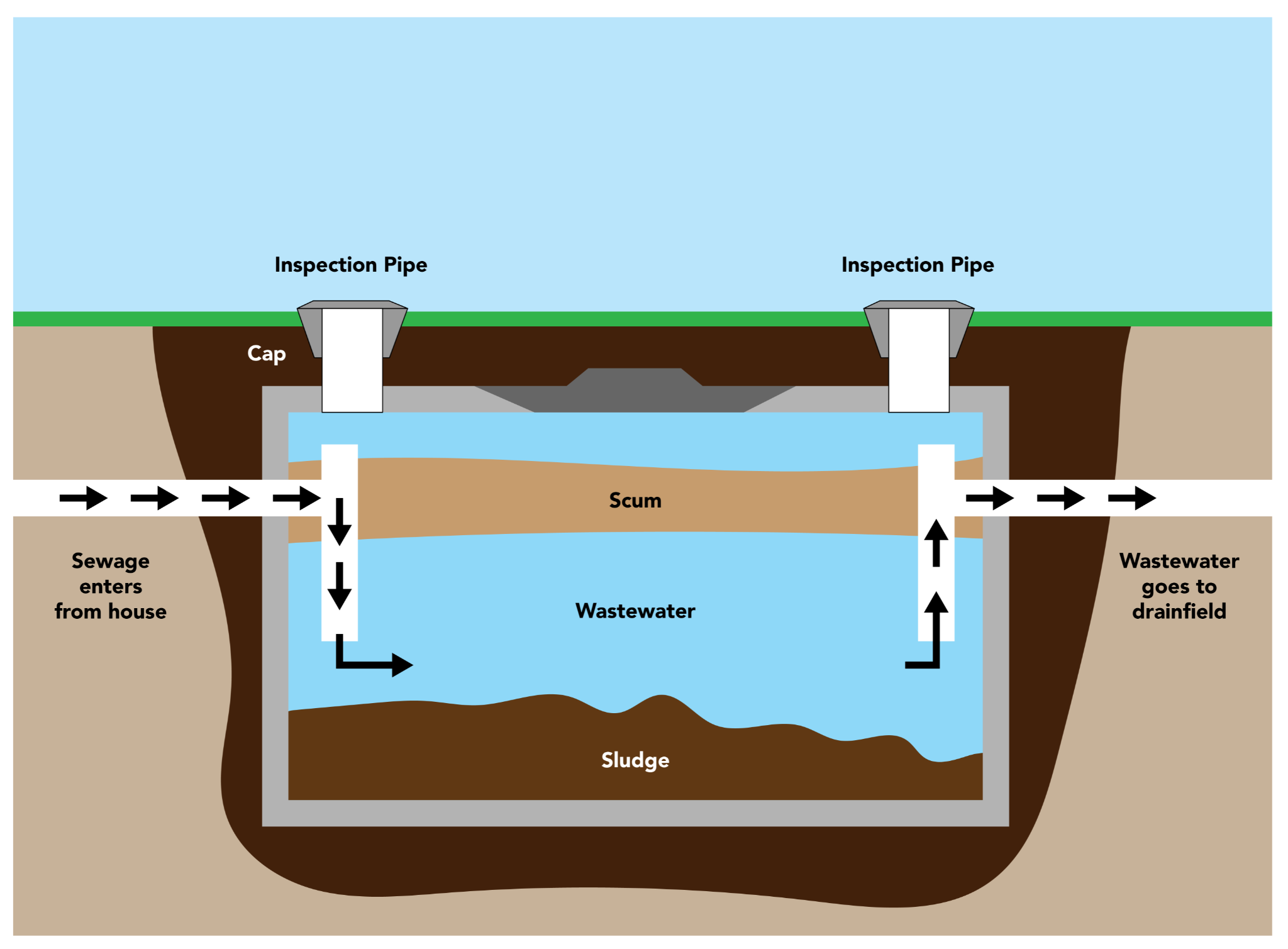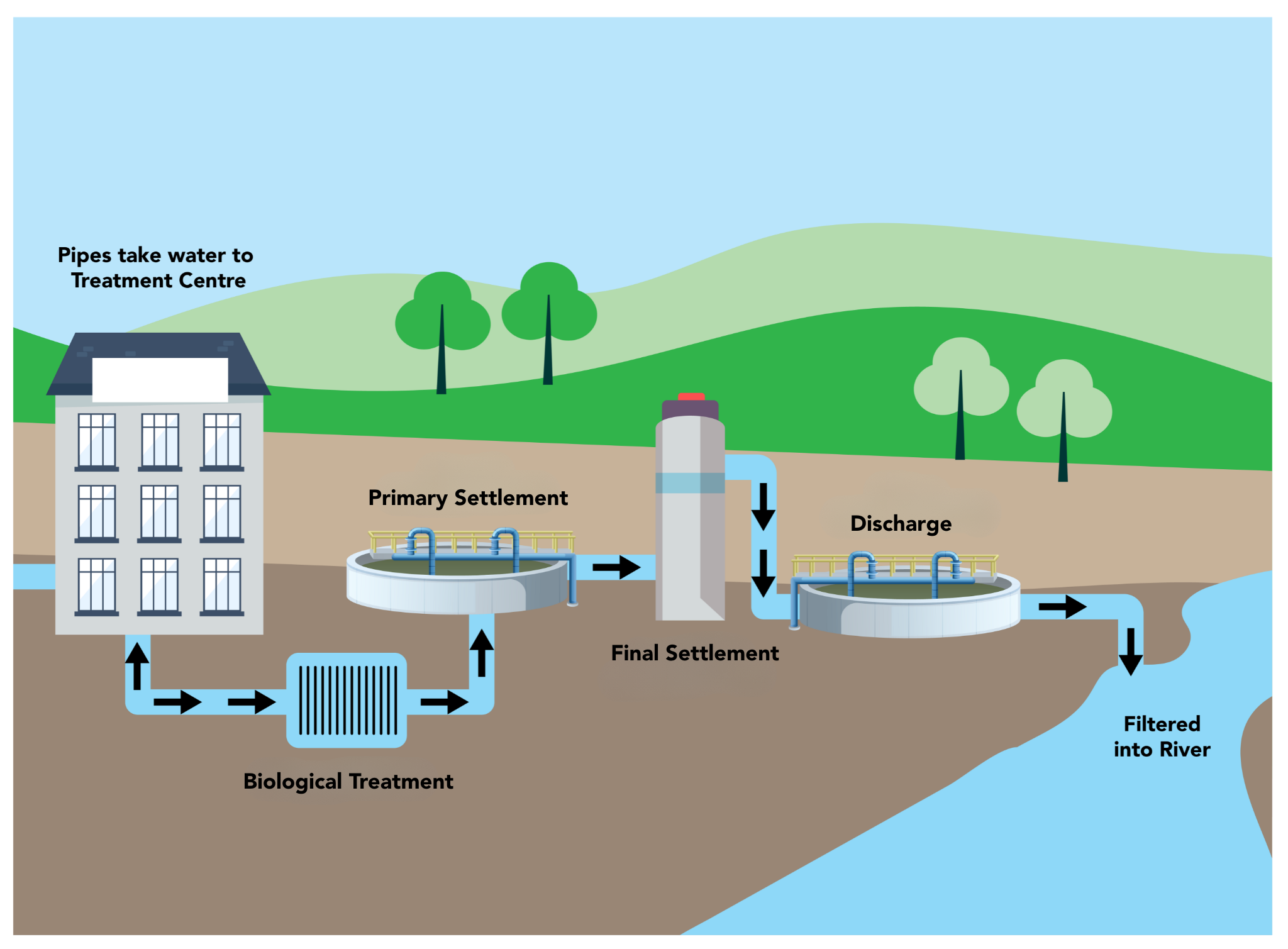Septic Tank and Sewage Treatment Plant: What You Need to Know
July 2, 2025
If your property isn’t connected to the mains sewer system, you’ve likely come across options like a septic tank, a sewage treatment plant, or even a cesspit tank. But what’s the difference between them, how do they work, and which one is right for you?
In this guide, we’ll break down everything you need to know about septic tank systems, sewage treatment plants, and the maintenance they require, helping you stay compliant, eco-friendly, and avoid unexpected costs.
What Is a Septic Tank?
 A septic tank is a self-contained wastewater treatment system commonly used in rural or off-grid areas. It works by separating solids and liquids from household wastewater. Natural bacteria in the tank then break down the organic matter.
A septic tank is a self-contained wastewater treatment system commonly used in rural or off-grid areas. It works by separating solids and liquids from household wastewater. Natural bacteria in the tank then break down the organic matter.
Key Benefits of a Septic Tank:
- Cost-effective installation and lower ongoing fees
- Eco-friendly treatment using natural biological processes
- Reduces pollution and protects local water sources
- Ideal for remote locations without mains drainage
- Nutrient recycling, helping soil enrichment
Septic Tank Maintenance:
To keep your system running efficiently and prevent environmental damage, regular maintenance is vital:
- Annual service visits
- Septic tank emptying once a year (or more frequently, depending on usage)
Neglecting to empty your septic tank can lead to blockages, bad odours, and even pollution fines, so don’t leave it too late!
Contact Willow Pump for septic tank maintenance.
Understanding Sewage Treatment Plants (STPs)
Unlike septic tanks, a sewage treatment plant goes a step further by actively treating wastewater to a higher standard before safely discharging it into the environment.
These systems are ideal for larger households, commercial properties, or any location that needs a more comprehensive waste treatment solution.
How a Sewage Treatment Plant Works:
A sewage treatment plant cleans wastewater by separating solids, breaking down organic matter using bacteria, and discharging the treated water in an environmentally safe manner. The process typically involves three main stages, followed by final discharge:

- Primary Settlement
Wastewater enters the plant and flows into a primary settlement tank. In this tank, heavier solids sink to the bottom to form sludge, while lighter materials float to the surface. This stage removes larger debris and some suspended solids.
- Biological Treatment
The liquid effluent then moves into a biozone or aeration chamber. Here, air is introduced to encourage the growth of beneficial bacteria, which digest the remaining organic matter in the water.
- Final Settlement
After biological treatment, the water flows into a final settlement tank. Any remaining solids, including surplus bacteria, settle out, resulting in a much cleaner effluent.
- Discharge
The treated effluent is then discharged—usually into a local watercourse, drainage field, or soakaway system, depending on the plant’s design and local environmental regulations.
This process significantly reduces pollutants in wastewater, making the final discharge safe for the environment.
In larger or industrial systems, additional treatment stages, such as screening or nutrient removal, may be included to handle higher volumes and more complex waste.
Get in touch for expert advice.
Benefits of a Sewage Treatment Plant:
- Prevents water pollution
- Protects biodiversity and reduces eutrophication
- Enables water recycling
- Sludge recycling into compost or fertiliser
- Generates biogas, which can be used for energy
- Reduces disease transmission through safe wastewater treatment
- Saves money on water supply costs in the long run
Sewage Treatment Plant Maintenance Checklist:
- Quarterly M&E service: checking pumps, tanks, control panels, and more
- Odour and gas monitoring
- Flow and effluent quality monitoring
- Regular cleaning using a tanker or combination unit
- Ongoing dosing and bacterial treatment
Regular upkeep of your sewage treatment plant ensures compliance with environmental regulations and keeps your system running smoothly.
Contact Willow Pumps for Sewage Treatment Plants maintenance.
Cesspit Tank: What You Need to Know
A cesspit tank is a sealed underground container used solely to store sewage and wastewater. Unlike a septic tank or STP, a cesspit doesn’t treat waste. It simply holds it until it’s professionally emptied.
Key Things to Note:
- No treatment takes place, it’s purely storage
- Requires frequent emptying, often monthly or more, depending on usage
- Higher ongoing costs due to emptying frequency
- Suitable for properties where treatment or discharge isn’t an option
Cesspits are generally used as a last resort where neither a septic tank nor a treatment plant is feasible.
Get in touch for expert advice.
Which System Is Right for You?
| System | Treatment | Desludging | Best For |
| Septic Tank | Basic | Annually | Homes without mains drainage |
| Sewage Treatment Plant | Advanced | Every 3-6 months | Larger households, commercial premises |
| Cesspit Tank | None | Monthly or more | Sites where no discharge is possible |
Whether you’re managing a septic tank, sewage treatment plant, or cesspit, regular servicing and professional emptying are essential. Our expert team offers fast, reliable cleaning and support, ensuring full environmental compliance.